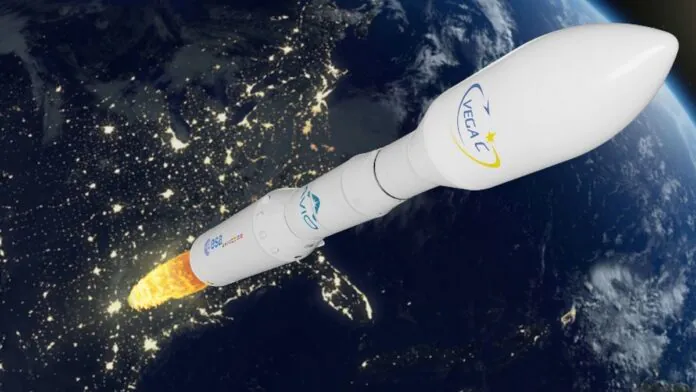© ROOT-NATION.com - Use of content is permitted with a backlink.
The European Space Agency (ESA) yesterday celebrated the first flight of its Vega-C rocket, which is designed to deliver a greater return on customer investment in the increasingly competitive business of launching satellites into orbit.
Vega-C is an upgrade of the Vega rocket, which debuted in 2012 as a launch vehicle for deliver small payloads into space. The new rocket can carry a heavier payload than its predecessor while burning less fuel.

ESA says Vega-C will be particularly useful for launching Earth observation satellites, but it is also expected to be used as a vehicle for Space Rider, an unmanned robotic laboratory that will be the agency’s first reusable spacecraft.
The launch of the 35-meter rocket from French Guiana was twice delayed shortly before the start due to technical problems, but succeeded on the third attempt. Vega-C accelerates much faster than its big sister Ariane 5, reaching a speed of 16,000 km per hour within two minutes of launch. Ariane 5, ESA’s heavyweight workhorse, will also soon be upgraded.
The Vega-C rocket on Wednesday launched an Italian-made satellite called LARES-2, which looks like a giant disco ball and will serve as a target for a ground-based laser station, and six small cube-shaped mini-satellites from France, Italy and Slovenia that contain scientific experiments

The head of ESA has announced a number of ambitious new projects as Europe tries to compete with the US, China and new private sector rivals in the space business.
The agency is also developing another variant, Vega-E, which would use a less polluting fuel consisting of liquid oxygen and methane. This launch vehicle should be ready by 2026.
You can also help Ukraine fight with Russian occupants via Savelife or via an official page of the National Bank of Ukraine.
- 781 days: Mysterious X-37B spacecraft sets a new flight record
- South Korea is now the 7th space power


